Regarding the project Grassland. What interested you about this area and what topographic and geographic characteristics were useful for exploring your interpretations of Landscape?
Phil Underdown (PU): My introduction to the site was a gradual one. Over the years, I would bicycle by the entrance, which was gated and clearly off limits. By the time it became a wildlife preserve and opened to the public, I was very curious. Entering the Grasslands for the first time was very much like entering a land that had once been forbidden. That the main part of the site is hidden from the outside, really reinforced my desire to see it as a separate land, defined by its borders, topography, and patterns of usage.
Once I was there, the experience visually was an unusual one. The flatness becomes a key part of the visual language. The way a given landscape looks is the result of a long chain of events, influences, and impacts leading up to that moment. In the case of theGrassland, the particulars of its recent history traced an arc that immediately interested me in terms of what it said about our relationship with our environment over time. This arc coincides with the time between when the airport was built and the decision to designate it as a National Wildlife Refuge, during which a variety of other uses left their traces. I was very interested by the ideas that there were all these layers of use contributing to its present state.
This site is being maintained and managed as a sort of hybrid natural space––almost like a farm whose crop is grassland birds––and it struck me that this is an important type of landscape to think about. It was also close to my home, so easy to spend a lot of time there. I often felt while photographing Grassland that this is what is left to us, as residents of the Northeast of the US––a managed landscape with little virgin wilderness. How do you explore what is so well known, so well mapped, measured and ordered? I think you explore what is close at hand and see what happens when you keep going back. The history of photography is full of grand vistas of mountains and plains. I tried to find these features on a smaller scale in the cracks and mounds ofGrassland.

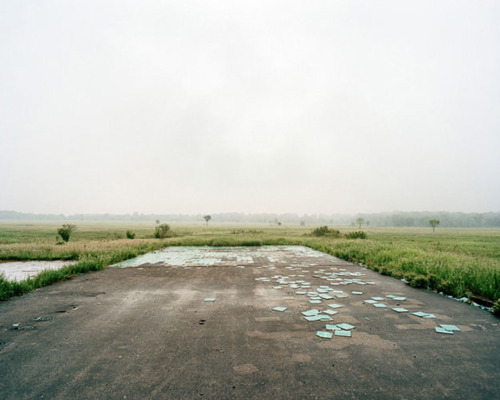
© Phil Underdown from the series 'Grassland'
Grassland, The Trappers Lament, The Field and Botanic Gardens projects depict the interaction of humans and the natural world. They could be seen as attempts to reconcile our objectification of nature and our inescapable immersion and interrelationship with it. Can you comment on this statement?
PU: I think the term reconciliation is an interesting way into this discussion. It implies a separation but also a desire to be rejoined, or less at odds with our environment. We seem to be very self-conscious about our relationship with nature, very aware of this feeling of being at odds with it, and yet we’re somehow unable to visualize ourselves as just another part of it.
I’ve always been interested in where my ideas and mythologies about nature come from, how they affect my daily life, and how they play out in the landscapes that I live in. Grassland, a nature preserve overlaid onto an old airstrip, was a landscape near my home, and the beavers in The Trappers Lament were literally in my backyard. In The Trappers Lament, the beavers’ arrival forced a reappraisal of my relationship with this piece of land, my “ownership” of it, forcing a confrontation with some of my cherished myths and beliefs about my own environmental values. The managed landscape ofGrassland, its history and current form, required me to rethink what came to mind when I thought of a grassland habitat or a wildlife refuge, to reconcile my preconceptions with this new form.
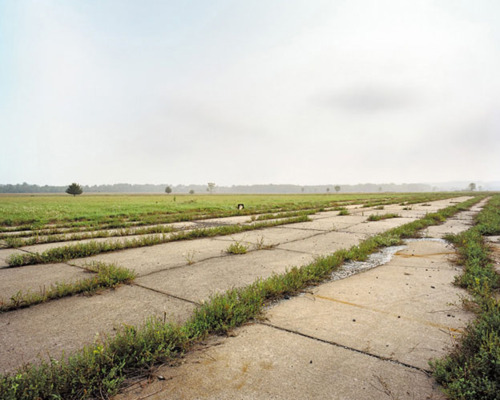
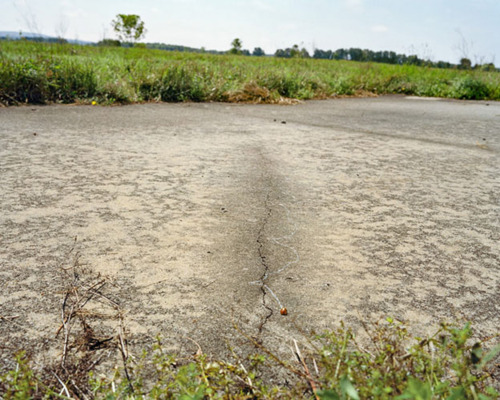
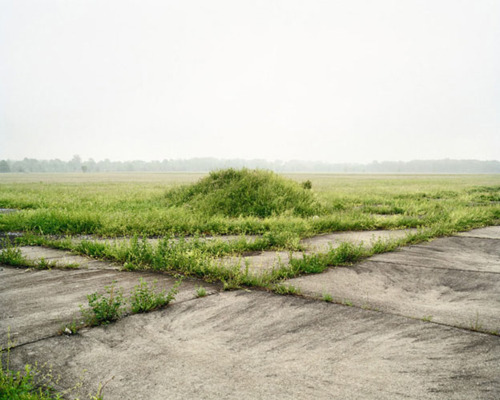
© Phil Underdown from the series 'Grassland'
Which photographers have influenced your work , and what other artists including writers influence your picture-making?
PU: In general, the work of the New Topographics and Dusseldorf School photographers has always been very influential. Some more specific examples—John Gossage’s, The Pond. Jem Southam’s Upton Pyne series, Frank Gohlke and his Sudbury River work, Gilbert Fastenaekens’ Noces, all interest me for their sustained, intense attention to a small personal landscape. Some other photographers and books—Simone Nieweg’s Landschaften und Gartenstuke, Mark Power’s 26 Different Endings, Gerhard Richter’s Wald, anything by Olaf Otto Becker… While working on The Trapper’s Lament, I’ve become increasingly interested in the interactions with the animals in our lives, so I’ve found the work of Charlotte Dumas, Neeta Mahdahar, and Tamany Baker interesting and inspiring.
Bill McKibben and JG Ballard have been the two writers that I keep coming back to. In The End of Nature, McKibben talks about losing his cherished beliefs about nature and bemoans the widespread and complete influence of humans. Over time in subsequent books he has come to write about what do we do now as we let go of the myths we can no longer afford to hold on to if we are going to try to cope with climate change.
JG. Ballard, in books like Crash, High Rise and Concrete Island, has the ability to define a landscape by concentrating on its key components, and then building a world around it. He also has this amazing ability to write in a very realistic, matter-of-fact way that slowly takes you to a stranger and stranger place, without you even realizing it, until you suddenly become aware of the strangeness of your surroundings. In structuring and editing Grassland, I always had Ballard in the back of my mind. An abandoned airstrip is a very Ballardian space, and I wanted to enter into it slowly and then have the strangeness of it sneak up on the viewer.
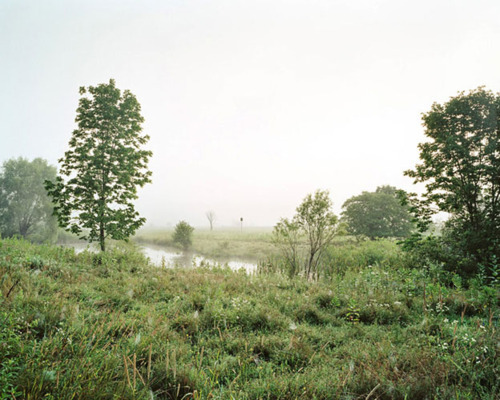
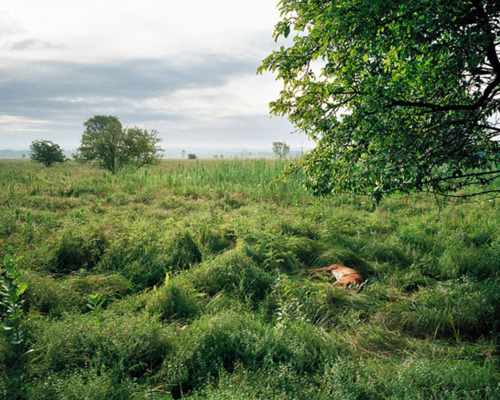
© Phil Underdown from the series 'Grassland'
I think of a photographic project as a process of editing and distillation of meanings. A sort of feedback system or dialogue that opens new pathways that can clarify intention or create new ones. Grassland was ongoing for four years. Can you describe your process of discovery while creating this body of work?
PU: There’s a little bit of shoot first ask questions later in my methodology, especially in the beginning of a project. Being able to go back over a long period of time is very useful in allowing room for this process to occur. When I began shooting at theGrasslands, I was driven by my initial reaction to the oddness of the space. Visually interesting to me, the site also presented a challenge. Its flatness forced a very limited visual and compositional palate. Ultimately, the flatness and the flat horizon, because of this engineered space, become a central feature that runs through the project.
There were also certain key images that clarified the project for me as I went along. Some of them didn’t make it through the editing process, but they were very important as road signs that pointed me in certain directions. Others stand out in the final edit as the DNA of the project, containing all the instructions for understanding the project as a whole.
An early image of a lone skid mark leading off the runway and into the weeds got me wondering about what stories would explain this; this place was filled with traces that told stories I would never know. This provided me with a direction to go during editing and subsequent shooting. I was building up a portrait of a world based on these traces. What did a world defined by these traces look like? Just as with the beaver project, there was a core idea of wondering what does the landscape of this collision—between humans and nature and history—look like? In both cases, my understanding of what I was seeking expression of in the landscape was something that developed over time, not something that I set out to illustrate.
The opening image in Grassland was also very important in helping me shape and conceptualize the project. All the elements of Grassland are there in this one picture: the birdhouse, the mowed field, the trees, but then fog…the viewer doesn’t know how to make sense of it yet. Very early on I knew this was the opening image. Settling on this image made it much easier to edit the remaining images. It set up a trajectory, much like settling on the title of the book—which references the abstract concept of traveling in a strange land, and sets Grassland apart as something separate from the Shawangunk Grasslands National Wildlife Refuge. That clearly conceptualized and set the tone for the rest of the project.
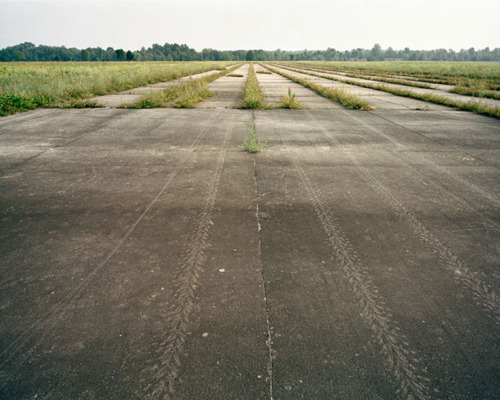
© Phil Underdown from the series 'Grassland'
The sky takes up half the picture in many images in Grassland and are often filled with vaporous clouds that rise above the fading human construct. Transcendence is a word that comes to mind.
PU: The skies in Grassland were partly born out of pragmatic reasons. I didn’t like the images I was getting with lots of blue sky, but overcast images were a little too static and dull. The rising fog is sort of in between the two. The lifting fog, indistinct clouds and distant horizons help make the space seem bigger, endless, more like fragments of a larger land.
The sky also manages to set the abstract concept of Grassland apart from the specific material place, The Shawangunk National Wildlife Refuge. Grassland became an imagined place to travel into, a place that I tried to build out of thousands of images taken over a long period of time. By keying into certain types of lighting, the atmospherics unified the images, and helped define a more abstract concept. I’m not sure what it is about the clearing fog, but there is a certain flux to it, a neither-here-nor-there quality that I really like. It helps take it out of the specific moment. I recently read an interview with Toshio Shibata in which he talks about trying to achieve a quality in his photographs that removes them from a specific place and time. “I take a lot of photographs and show very few. If there is too much reality, too much identifiable sense of time and place, I don’t show these images.”
Grassland image #221 illustrates this well. This image for me really defines and illustrates the conceptual space of Grassland. The foreground, in fact all the ground stretching to the horizon, is mowed grass with the lines from the mower stretching off the edge of the image. The trees, receding into the haze of the horizon, could also seem to go on forever, and the clouds, hazy and indistinct, reference a general sense of weather and climate rather than a specific weather event. If a video game programmer tried to define the landscape of Grassland in this image, it would only need a very simple set of rules to generate this same image. A certain number of trees, a certain length of grass, extended indefinitely… Seeing it this way helped me see more clearly the rules that this real place was the product of.
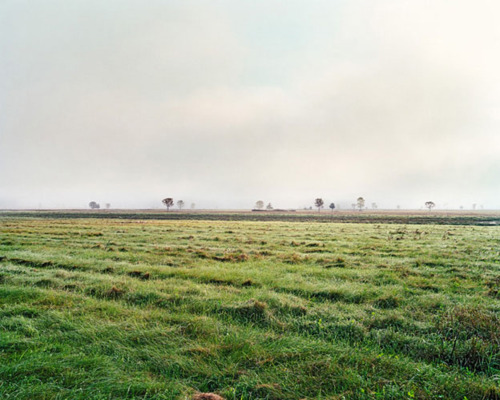

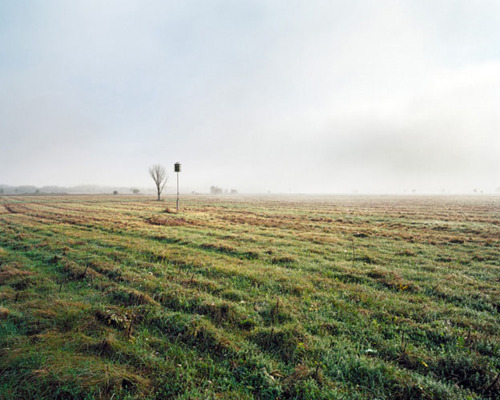
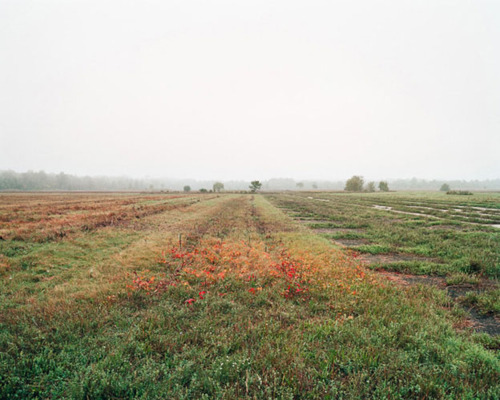
© Phil Underdown from the series 'Grassland'
After all this process we end up with the object. You have made books and presented in a Gallery setting. Is the print an important part of your statement? Could tell us something about your experiences regarding publishing books.
PU: For me the book is the end form of the work. The act of making it, from conceptualization through design, sequencing and editing, is an essential part of developing my ideas. It also allows the viewer a fuller experience of the work than what is possible on a gallery wall. Finding a form of self-publishing that was affordable and of high quality for the Grasssland book was really important. This limited edition artist book has a very tactile and intimate quality to it; it becomes a cross between a book and a gallery object, and people have reacted positively to that aspect of it. I was lucky to have the support of photo-eye and Kehrer Verlag’s Trouves series to get the Grassland book out to a wide audience.
Professionally, I spent many years as fine-art color printer. So, although I’ve struggled with the meaning and function of the gallery world, I’ll always love the prints. And, although I see the book as the final form, and the place that I can put together a coherent thought-process and statement, I’ll always believe that the book or the web can’t do justice to the visual impact of the final prints, which is why I spend way too long on the process of producing the final prints.
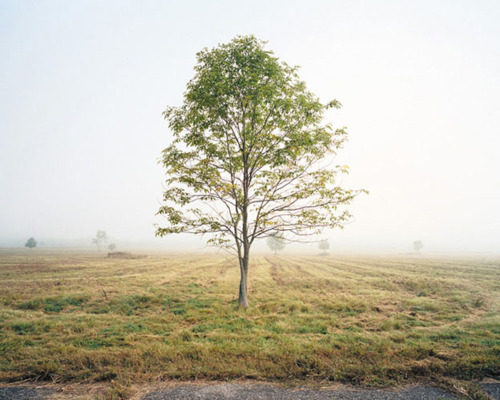
© Phil Underdown from the series 'Grassland'
---
LINKS
Phil Underdown
United States
share this page